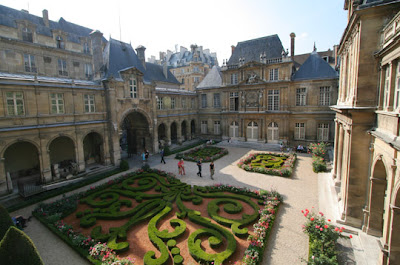Tomorrow I fly to Paris with my daughter Lily. We plan on sketching and visiting museums we
have heard about, but never had the opportunity to see. I hope to blog about these collections from
my iPad.
As a preview here are a few of the museums we hope to visit. At the
top of the list is the Musee Jacquemart Andre, recommended by friends Laura
Primrose and Avery Fullerton. This late
19th century mansion houses what looks to be an exceptional
collection of paintings, sculptures and decorative arts. The museum is currently the venue for a Eugene Boudin landscape painting exhibition.
Inside the Musee Jacquemart Andre
Also on the list is Musee Carnavalet, set in two Renaissance
style mansions in the Marais section of Paris, this museum highlights the
history of Paris.
The Musee des Arts Decoratifs is know for their elegant
exhibitions of fashion history. The collection offers furniture and fashion
designs from the Middle Ages through the present day. While there Lily and I hope to see the
current exhibition “Fashioning Fashion: Two Centuries of European Fashion 1700–1915”.
Inside Musee des Arts Decoratifs.
Finally we hope to visit Musee Gustave Moreau, the former home and studio of 19th century symbolist Guatve
Moreau with thousands of his works on view.
Inside Musee Gustave Moreau.
If time permits we hope we return to the Musee D’Orsay, and visit the Petite Palais and Musee Eugene Delacroix.













